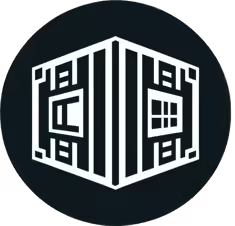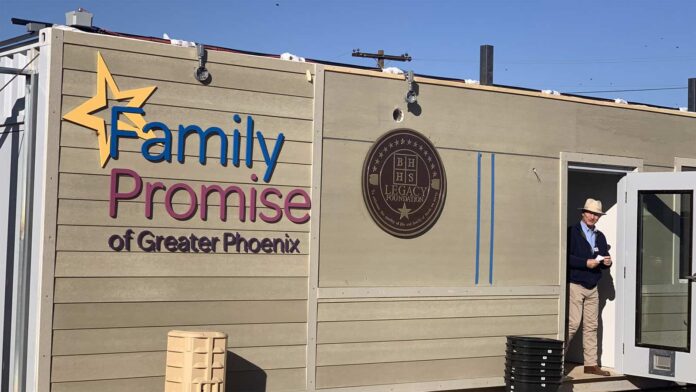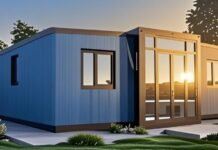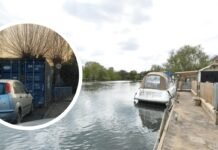As homelessness continues to rise in cities across the United States, innovative solutions are essential to tackle this pressing issue. In Glendale, Arizona, a trailblazing nonprofit organization, Family Promise of Greater Phoenix, is spearheading a transformative approach to affordable housing through the creative repurposing of shipping containers. Their latest initiative, Legacy Village, is not just a project — it’s a lifeline for families striving to escape homelessness.
A Unique Approach to Affordable Housing
For over 25 years, Family Promise of Greater Phoenix has dedicated itself to supporting the unhoused population in the metro area. Now, they’re turning overseas shipping containers into fully furnished homes to meet the urgent need for affordable housing. Located near 59th Street and Bethany Home Road, the six-container units that form Legacy Village represent a forward-thinking solution to an escalating crisis.
“We’re using shipping containers because it’s a cheap and easy way to throw up homes for people in need to live in as quickly as possible,” says Ted Taylor, CEO of Family Promise. The emphasis on affordability doesn’t compromise quality; these units are designed to be robust and functional, providing a safe haven for families transitioning out of homelessness.
Cost-Effective Construction
The use of shipping containers as building blocks allows for significant savings and efficiency. The factory-based manufacturing of these units leads to a quicker construction turnaround, significantly cutting costs compared to traditional building methods. According to Taylor, the average cost for each unit is just above $100,000, a steep contrast to the $300,000 to $400,000 price tag typically associated with traditional two-bedroom apartments in the area.
Each unit, approximately 650 square feet in size, is formed by combining two containers into a compact, livable space. This approach not only simplifies the construction process but also minimizes the environmental footprint, as it recycles materials that might otherwise contribute to waste.
Features of Legacy Village Units
Inside, the units of Legacy Village are designed to be modern and welcoming. The interiors undergo meticulous refurbishment, and furnishings from IKEA transform the space into functional and inviting homes. Kitchens equipped with essential appliances, colorful artwork on the walls, and distinct living and bedroom areas provide a warm atmosphere for residents. Taylor emphasizes the unique design considerations taken into account, noting the partnership with IKEA’s top designers to ensure quality and durability in the furnishings.
Innovative design elements extend beyond mere aesthetics. Each unit is equipped with proper ventilation systems to maintain air quality in what are otherwise tightly sealed metal structures. This careful consideration ensures that residents have not just shelter, but a genuinely liveable environment that prioritizes comfort and functionality.
Community-Centric Design
Legacy Village is about more than just individual units; it’s about fostering a sense of community among its residents. Plans for the site include artificial turf, flower pots adorning doors, and a central courtyard complete with a metal pergola that provides shade during the harsh Phoenix heat. This communal space is intended to encourage families to connect and support one another.
“Ted Taylor highlighted that the goal is to make families feel safe and at home. The layout encourages social interaction and community engagement, creating a family atmosphere that is often lacking in traditional shelters.
Supporting Families in Transition
Legacy Village aims to serve as transitional housing, creating a vital bridge between temporary shelters and permanent residences. The rental mechanism for residents employs a sliding scale based on income, allowing families to save a significant portion of their income while ensuring stability. Taylor states that tenants are encouraged to save 80% of their net income to build financial resilience, ultimately preparing them for the next step in their housing journey.
Once families have stabilized in Legacy Village, they are positioned to move into more permanent housing, which is part of Family Promise’s broader mission to deliver long-term solutions to homelessness. The organization’s experience suggests that those who successfully transition from Legacy Village often desire housing options similar to those available near ASU SkySong, where more traditional housing exists.
The Road Ahead
As of late October 2023, construction is still underway at Legacy Village, with the anticipated completion date set for December or January. This innovative project represents not just bricks and mortar, but a renewed hope for countless families in the Phoenix metro area grappling with homelessness.
By embracing unconventional solutions like those offered at Legacy Village, Family Promise is setting a precedent for how communities can come together to support their most vulnerable members. This project exemplifies the power of creative thinking, compassion, and collaboration in addressing the challenges of homelessness.
Conclusion
The story of Legacy Village is a testament to ingenuity in the face of adversity. As cities continue to grapple with rising homelessness rates, initiatives like this highlight the importance of reimagining what affordable housing can look like. By transforming shipping containers into livable spaces, Family Promise of Greater Phoenix is not just providing shelter, but crafting a pathway toward stability and lasting impact in the community.
We Want to Hear From You
To share your own thoughts or stories related to innovative housing solutions, please reach out to the KTAR News team here. Together, we can build a brighter future for all families in the Valley and beyond.














